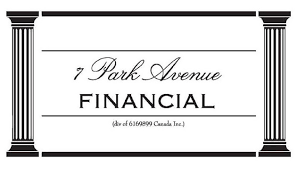|
Why Smart Canadian Businesses Choose Asset-Based Lending
Your Sales And Business Assets Are Your Best Collateral
YOUR COMPANY IS LOOKING FOR A CANADIAN ASSET-BASED LINE OF CREDIT
BUSINESS FINANCING!
UPDATED 07/03/2025
You've arrived at the right address! Welcome to 7 Park Avenue Financial
Financing & Cash flow are the biggest issues facing businesses today
ARE YOU UNAWARE OR DISSATISFIED WITH YOUR CURRENT BUSINESS FINANCING OPTIONS?
CONTACT US
CALL NOW - DIRECT LINE - 416 319 5769 - Let's talk or arrange a meeting to discuss your needs
EMAIL - sprokop@7parkavenuefinancial.com

ASSET BASED FINANCING
Asset-Based Credit Lines: Turning Business Problems into Solutions
Can an asset-based credit line turn a business problem into a solution?
We think it can, so when working capital lines are a need in your firm, it's important to understand that revolving asset facilities can be a 'mission-critical' part of your firm's success in growth, profits, and cash flow. Let's dig in.
Breaking Free from Cash Flow Constraints
Cash flow problems strangle business growth when you need it most.
Traditional banks scrutinize your credit history while your opportunities slip away.
Let the 7 Park Avenue Financial team show you how an asset-based line of Credit transforms your existing assets into immediate working capital, bypassing lengthy approval processes and credit score requirements that hold successful businesses back.
3 Uncommon Takes on Asset Based Line of Credit
- The "Asset Velocity" Approach: Most businesses view their assets as static resources, but an Asset Based Line of Credit treats them as dynamic capital generators. Your inventory doesn't just sit on shelves—it becomes a revolving door of liquidity that grows with your business.
- The "Credit Score Equalizer": While traditional financing penalizes past financial struggles, asset-based lending levels the playing field. Your machinery, real estate, and receivables tell the story of your business's true value, not your historical credit missteps.
- The "Seasonal Scaling Solution": Unlike fixed-term loans, Asset Based Lines of Credit naturally flex with your business cycles. During peak seasons, you access more capital as your qualifying assets increase. During slower periods, you only pay for what you use.
Understanding Asset-Based Lending Solutions
When working capital starts to become a critical day-to-day challenge, Canadian business owners and financial managers must consider all business financing options.
Asset-based credit lines/working capital lines are increasingly popular, and... guess what?... often misunderstood!
This type of financing comes under the broad category of asset-based lending, and the simple definition of such a facility is the ability of your firm to maintain an operating line of credit outside of a bank relationship.
Bank Financing vs. Alternative Finance
The small handful of banks in Canada must accommodate everyone, which is a challenge for rapidly growing businesses.
With only 5 or 6 major banks that provide financing to businesses, it can be difficult for a company to attract the financing it needs to grow—and more so if things aren't going to plan!
The financing requirements and covenants of banks are strict due to bank regulation, and the size and stability of a firm are important factors for bank lending.
The common belief is that fast-growing businesses are a positive factor—but not necessarily the case in bank lending.
So growth financing becomes somewhat of a catch-22. A startup firm faces tough enough challenges as very little financial assistance is provided to these firms without prerequisite personal guarantees, outside collateral, focus on maintaining certain financial ratios, etc.
That is the attraction of alternative finance and asset-based financing versus unsecured loans from banks.
With an emphasis on a company's assets/physical assets and sales, the loan-to-value ratio in business lending becomes very attractive for key liquid assets such as eligible accounts receivable
That allows a business to achieve a maximum loan otherwise not obtainable from a bank via an ongoing borrowing base certificate that grows commensurate with sales growth and asset growth.
Any business that has substantial assets and cannot obtain commercial banking support is a clearly eligible firm for term loans and lines of credit solutions.
There are multiple forms of asset financing, including asset-based lending terms/solutions such as factoring, tax credit financing, bridge financing, and asset-based lending for real estate via commercial real estate bridge loans, etc.! Other assets can also be funded on a sale-leaseback basis.
Key Uses of Asset-Based Loans
Businesses can use asset-based loans for a number of financing solutions around revolving credit lines with a 'covenant light' structure.
Is your business looking for:
3 Critical Factors for Understanding the Benefits of Asset Finance Credit Lines
Here are 3 critical factors that you need to know and understand about the true benefits of 'asset finance credit lines':
-
What assets are financed under this facility and how does this differ from a bank facility?
-
How does the facility work on a day-to-day basis?
-
What are the fees involved and how much can we get from a total working capital perspective?
Let's start with our first critical factor—exactly what is this type of facility.
An asset-based line of credit, in its true sense and in the context we are discussing, is a working capital revolving credit. The assets that are secured under this facility are accounts receivable, inventory, and in many cases equipment and actually sometimes real estate.
We posed the question—how does this facility work when we compare it to a chartered bank line of credit? In actuality, it is quite similar, with the main difference being that 99% of the time you can extract additional borrowing power out of the assets we mentioned.
Banks are the low-cost and most flexible and common business credit line—but they focus on:
Asset-based lines of credit in fact tend to eliminate many of those considerations and focus only on one key point—the assets!
Because that is the case, receivables and inventory are margined up, via traditional borrowing-based certificates, to a much higher level than might otherwise be maintained with traditional financing.
When you factor in working capital that is secured by equipment, you can quickly see that your borrowing capacity has increased significantly.
Point #2 - How does it work?!
Similar to a bank revolving line of credit, your borrowing capacity in an asset-based line of credit is simply the drawing down, on a weekly, monthly, or in fact anytime basis, of your total borrowing capacity based on your reporting of current A/R, inventory and equipment levels.
Asset-based lines of credit typically cost more than the bank. In Canada, these facilities are priced from 7-9% per annum to 1-2% a month.
What determines this huge spread in pricing?
It is the overall asset quality and size of the transaction, as well as the ability of many asset-based lenders to do transactions that would normally not be anywhere near to being considered by a bank, and as such, the risk is higher, so pricing is higher.
It is as simple as that. In terms of what amounts you can borrow, you can assume 90% of A/R, a 40-60%+ range on inventory, and a similar amount for equipment as a pledged asset. (Equipment would often be subject to a market value appraisal.)
Bottom line? -greater credit availability based on sales and asset values , for small,mid sized companies and larger corporations.
Case Study: Manufacturing Success
Company: Canadian Manufacturing Firm
Challenge: Seasonal cash flow gaps affecting production capacity
Solution: $2M Asset Based Line of Credit secured by equipment and inventory Results:
- Maintained production during slow seasons
- Increased order fulfillment capacity by 35%
- Reduced supplier payment terms from 45 to 15 days
- Achieved 28% revenue growth within 12 months
Asset based lending works!
Conclusion - Asset-Based Lending in Canada is Growth Financing!
Why choose asset-based lending?
Talk to the 7 Park Avenue Financial team about the numerous benefits of an asset-based loan—it's less restrictive and gives your firm the flexibility you need to run and grow your business.
We'll provide info on a broad range of 'ABL' solutions that provide more financing on a broad range of eligible collateral at asset-based lending interest rates commensurate with your firm's situation and credit quality.
Does your firm need more working capital? Are you self-financing now? Are you unable to access traditional financing, or, more commonly, does traditional financing seem unable to meet your growth or unique situation needs?
Call 7 Park Avenue Financial, a trusted, credible, and experienced Canadian business financing advisor with asset-based lending expertise.
FAQ: Frequently Asked Questions / More Information / People Also Ask
What is meant by asset-based lending?
Asset-based loans are business financing solutions structured as term loans or business lines of credit. These loans are secured by the sales and collateral of the business. Typical assets secured under these facilities include accounts receivable, inventories, commercial real estate owned by the business, tax credits, and other key balance sheet assets such as fixed assets/equipment and rolling stock.
How does an Asset Based Line of Credit work for small businesses?
Asset Based Line of Credit functionality revolves around using your business assets as collateral for a revolving credit facility, providing ongoing access to working capital based on qualifying asset values.
What businesses benefit most from an Asset Based Line of Credit?
Asset Based Line of Credit solutions work best for manufacturers, distributors, wholesalers, and service companies with substantial receivables, inventory, or equipment that can serve as collateral.
When should a business consider an Asset Based Line of Credit?
Asset Based Line of Credit timing becomes crucial during growth phases, seasonal fluctuations, or when traditional financing proves insufficient for your capital needs.
Citations
- Bank of Canada. "Small Business Financing in Canada." https://www.bankofcanada.ca
- Canadian Bankers Association. "Business Lending Trends Report." https://www.cba.ca
- Statistics Canada. "Business Credit Conditions Survey." https://www.statcan.gc.ca
- Business Development Bank of Canada. "Alternative Financing Study." https://www.bdc.ca
- Canadian Federation of Independent Business. "Business Barometer Report." https://www.cfib-fcei.ca
- 7 Park Avenue Financial . " Asset based lending in Canada". https://www.7parkavenuefinancial.com/abl-lending-asset-based-loan-rates.html

' Canadian Business Financing With The Intelligent Use Of Experience '
STAN PROKOP
7 Park Avenue Financial/Copyright/2025

ABOUT THE AUTHOR: Stan Prokop is the founder of 7 Park Avenue Financial and a recognized expert on Canadian Business Financing. Since 2004 Stan has helped hundreds of small, medium and large organizations achieve the financing they need to survive and grow. He has decades of credit and lending experience working for firms such as Hewlett Packard / Cable & Wireless / Ashland Oil
|